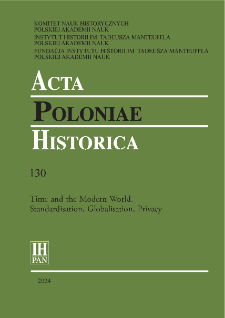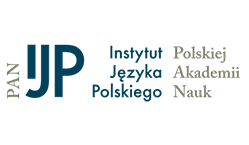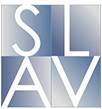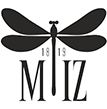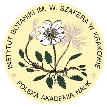- Search in all Repository
- Literature and maps
- Archeology
- Mills database
- Natural sciences
Advanced search
Advanced search
Advanced search
Advanced search
Advanced search

Object
Title: Personal Watches in Warsaw, 1890–1914: Social Meanings
Subtitle:
Acta Poloniae Historica T. 130 (2024), Time and the Modern World. Standardisation, Globalisation, Privacy ; Time and the Modern World. Standardisation, Globalisation, Privacy
Institutional creator:
Fundacja Instytutu Historii im. Tadeusza Manteuffla Polskiej Akademii Nauk
;
Polska Akademia Nauk, Instytut Historii im. Tadeusza Manteuffla
![]() ;
Polska Akademia Nauk. Komitet Nauk Historycznych
;
Polska Akademia Nauk. Komitet Nauk Historycznych
![]()
Contributor:
Instytut Historii Polskiej Akademii Nauk
Publisher:
Instytut Historii im. Tadeusza Manteuffla Polskiej Akademii Nauk ; Fundacja Instytutu Historii im. Tadeusza Manteuffla Polskiej Akademii Nauk
Place of publishing:
Description:
Abstract:
The article discusses the phenomenon of personal watches in the Kingdom of Poland at the turn of the twentieth century. These lands can be considered doubly peripheral: both in terms of power over official time, which was exercised by the administration of the Russian partition (controlled from a centre in the East), and in terms of production of timepieces, which were imported from abroad (produced in the West). The importation of watches, mainly Swiss, was associated with various local practices (advertising campaigns, fabrication of dials with the names of local watchmakers, etc.), and above all, it created a spectrum of attitudes and symbols in the “theatre of everyday life”. The watch was a marker of gender, a symbol of social and professional status, power, and political attitudes; it signified historical memory and loyalty to superiors.
References:
Donzé Pierre-Yves, Des nations, des firmes et des montres: histoireglobale de l’industriehorlogère de 1850 à nosjours (Neuchâtel, 2020).
Frykman Jonas and Orvar Löfgren, Culture Builders: A Historical Anthropology of Middle-Class Life, transl. Alan Crozier (New Brunswick, NJ – London, 1987).
Głębocki Wiesław, Zegarmistrzowie warszawscy XIX wieku (Warszawa, 1992).
Goffman Erving, The Presentation of Self in Everyday Life (Edinburgh, 1956).
Kiepurska Halina, Warszawa 1905–1907 (Warszawa, 1991).
Łukasiewicz Juliusz, ‘Zmiany kierunków szlaków handlowych w Królestwie Polskim w drugiej połowie XIX wieku’, Przegląd Historyczny, lxiv, 4 (1973), 823–38.
McCrossen Alexis, Marking Modern Times: A History of Clocks, Watches, and Other Timekeepers in American Life (Chicago–London, 2016).
Mrugalski Zdzisław, Historia zegarmistrzostwa w Polsce (Radom, 2011).
Żarnowska Anna, Robotnicy Warszawy na przełomie XIX i XX wieku (Warszawa, 1985).
Relation:
Volume:
Start page:
End page:
Detailed Resource Type:
Format:
Resource Identifier:
oai:rcin.org.pl:244530 ; 2450-8462 ; 0001-6829 ; 10.12775/APH.2024.130.01
Source:
IH PAN, sygn. A.295/130 Podr. ; click here to follow the link
Language:
Rights:
Creative Commons Attribution BY 4.0 license
Terms of use:
- ; Copyright-protected material. [CC BY 4.0] May be used within the scope specified in Creative Commons Attribution BY 4.0 license, full text available at:
Digitizing institution:
Institute of History of the Polish Academy of Sciences
Original in:
Library of the Institute of History PAS
Projects co-financed by:
Access:
Object collections:
- Digital Repository of Scientific Institutes > Partners' collections > Institute of History PAS > Serials
- Digital Repository of Scientific Institutes > Partners' collections > Institute of History PAS > Institute Publications
- Digital Repository of Scientific Institutes > Partners' collections > Institute of History PAS > Institute Publications > Journals
- Digital Repository of Scientific Institutes > Partners' collections > Institute of History PAS > Institute Publications > Journals > Acta Poloniae Historica
- Digital Repository of Scientific Institutes > Literature > Journals/Articles
Last modified:
Mar 27, 2025
In our library since:
Mar 27, 2025
Number of object content downloads / hits:
1
All available object's versions:
https://rcin.org.pl./publication/281400
Show description in RDF format:
Show description in RDFa format:
Show description in OAI-PMH format:
| Edition name | Date |
|---|---|
| Brzostek, Błażej (1977– ), Personal Watches in Warsaw, 1890–1914: Social Meanings | Mar 27, 2025 |
Objects Similar
Litwinowicz-Droździel, Małgorzata
[Gozduś, K.]
Penkała-Jastrzębska, Anna (1988– )
Biernat, Andrzej (1949– )
Ryszewska, Katarzyna
Demski, Dagnosław

 INSTYTUT ARCHEOLOGII I ETNOLOGII POLSKIEJ AKADEMII NAUK
INSTYTUT ARCHEOLOGII I ETNOLOGII POLSKIEJ AKADEMII NAUK
 INSTYTUT BADAŃ LITERACKICH POLSKIEJ AKADEMII NAUK
INSTYTUT BADAŃ LITERACKICH POLSKIEJ AKADEMII NAUK
 INSTYTUT BADAWCZY LEŚNICTWA
INSTYTUT BADAWCZY LEŚNICTWA
 INSTYTUT BIOLOGII DOŚWIADCZALNEJ IM. MARCELEGO NENCKIEGO POLSKIEJ AKADEMII NAUK
INSTYTUT BIOLOGII DOŚWIADCZALNEJ IM. MARCELEGO NENCKIEGO POLSKIEJ AKADEMII NAUK
 INSTYTUT BIOLOGII SSAKÓW POLSKIEJ AKADEMII NAUK
INSTYTUT BIOLOGII SSAKÓW POLSKIEJ AKADEMII NAUK
 INSTYTUT CHEMII FIZYCZNEJ PAN
INSTYTUT CHEMII FIZYCZNEJ PAN
 INSTYTUT CHEMII ORGANICZNEJ PAN
INSTYTUT CHEMII ORGANICZNEJ PAN
 INSTYTUT FILOZOFII I SOCJOLOGII PAN
INSTYTUT FILOZOFII I SOCJOLOGII PAN
 INSTYTUT GEOGRAFII I PRZESTRZENNEGO ZAGOSPODAROWANIA PAN
INSTYTUT GEOGRAFII I PRZESTRZENNEGO ZAGOSPODAROWANIA PAN
 INSTYTUT HISTORII im. TADEUSZA MANTEUFFLA POLSKIEJ AKADEMII NAUK
INSTYTUT HISTORII im. TADEUSZA MANTEUFFLA POLSKIEJ AKADEMII NAUK
 INSTYTUT JĘZYKA POLSKIEGO POLSKIEJ AKADEMII NAUK
INSTYTUT JĘZYKA POLSKIEGO POLSKIEJ AKADEMII NAUK
 INSTYTUT MATEMATYCZNY PAN
INSTYTUT MATEMATYCZNY PAN
 INSTYTUT MEDYCYNY DOŚWIADCZALNEJ I KLINICZNEJ IM.MIROSŁAWA MOSSAKOWSKIEGO POLSKIEJ AKADEMII NAUK
INSTYTUT MEDYCYNY DOŚWIADCZALNEJ I KLINICZNEJ IM.MIROSŁAWA MOSSAKOWSKIEGO POLSKIEJ AKADEMII NAUK
 INSTYTUT PODSTAWOWYCH PROBLEMÓW TECHNIKI PAN
INSTYTUT PODSTAWOWYCH PROBLEMÓW TECHNIKI PAN
 INSTYTUT SLAWISTYKI PAN
INSTYTUT SLAWISTYKI PAN
 SIEĆ BADAWCZA ŁUKASIEWICZ - INSTYTUT TECHNOLOGII MATERIAŁÓW ELEKTRONICZNYCH
SIEĆ BADAWCZA ŁUKASIEWICZ - INSTYTUT TECHNOLOGII MATERIAŁÓW ELEKTRONICZNYCH
 MUZEUM I INSTYTUT ZOOLOGII POLSKIEJ AKADEMII NAUK
MUZEUM I INSTYTUT ZOOLOGII POLSKIEJ AKADEMII NAUK
 INSTYTUT BADAŃ SYSTEMOWYCH PAN
INSTYTUT BADAŃ SYSTEMOWYCH PAN
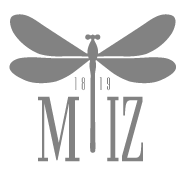 INSTYTUT BOTANIKI IM. WŁADYSŁAWA SZAFERA POLSKIEJ AKADEMII NAUK
INSTYTUT BOTANIKI IM. WŁADYSŁAWA SZAFERA POLSKIEJ AKADEMII NAUK
